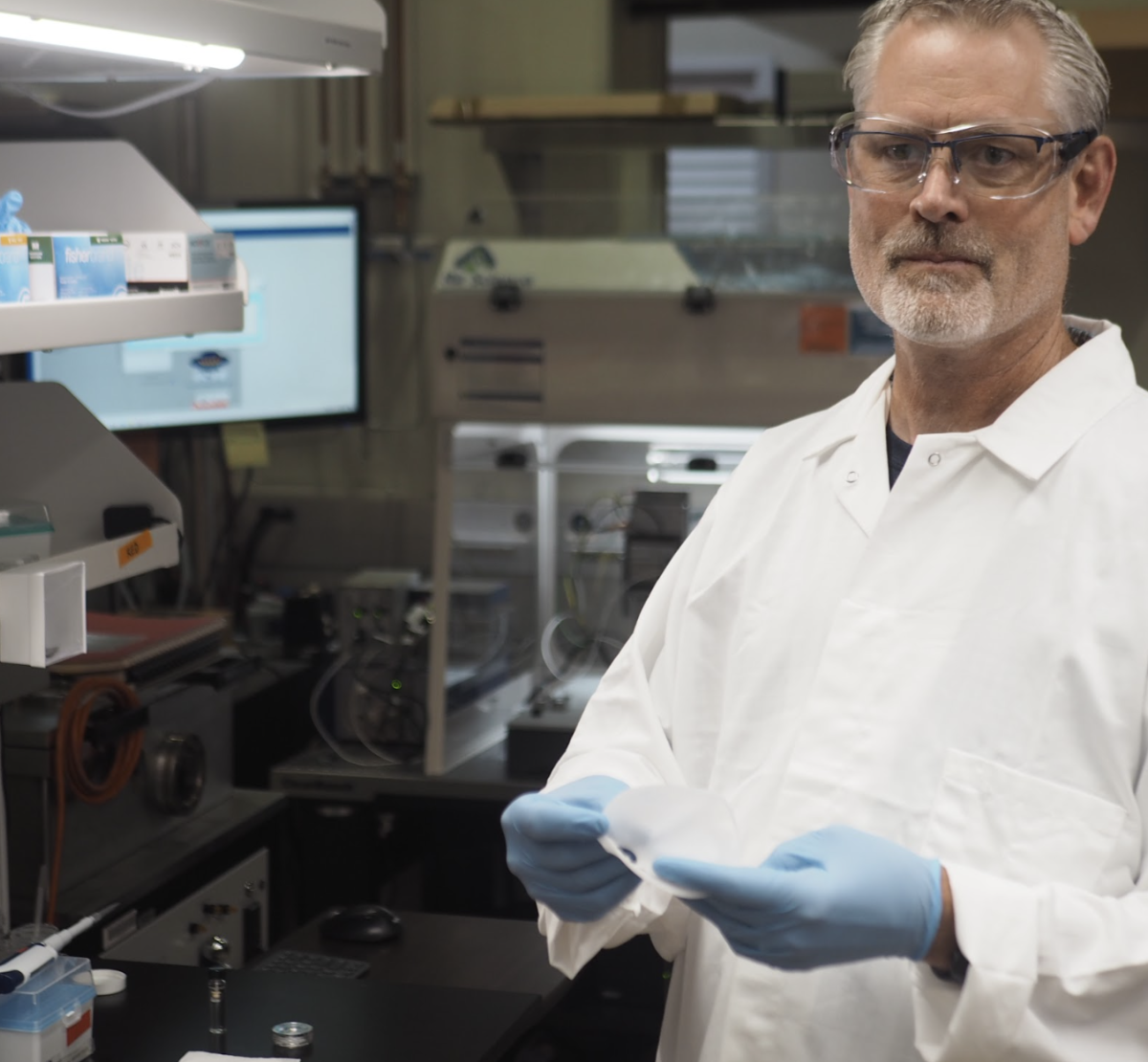Are you using a RET curriculum project in your own classroom?
If so, please take our short SURVEY!

Roughness, Friction, and Complications of Textured Implants
The UCSB Interfacial Engineering Lab group, run by Dr. Angela Pitenis, conducts research at the intersection of materials science, physics, chemistry, and biology, and aims to understand interfacial phenomena and energy-dissipation at the interfaces of soft materials. My research under the mentorship of Dixon Atkins focused on the question: What is the link between surface roughness of silicone-based breast implants and breast implant-associated anaplastic large cell lymphoma? My lab work centered on fabricating and friction testing highly textured silicone (PDMS) materials of various elasticities in order to generate debris for later immune response testing. To generate elastomer debris, I tested PDMS samples of various stiffnesses in a tribometer -a device that measures friction and wear. Interestingly, the stiffer PDMS 10:1 appeared to elicit a strong immune response from macrophages. This is likely due to the morphology and large average size of debris resulting from this material. Therefore, it may be possible to engineer safer silicone-based implants by making them less textured and more elastic.
The intersection of physics, chemistry, and biology in this RET have inspired me to have students work with materials like hydrogels and elastomers at very small scales, develop precision with their lab techniques and incorporate more math skills in everyday science investigations.
"Engineering the Perfect Gummy” A Hydrogel Design Challenge
This inquiry-rich unit incorporates the 5E Instructional Model—Engage, Explore, Explain, Elaborate, Evaluate—using edible hydrogels (gummies) as the engineering medium. Inspired by a TeachEngineering activity, the goal is for students to better understand polymers, test design variables, and engineer their own optimal hydrogel gummies.